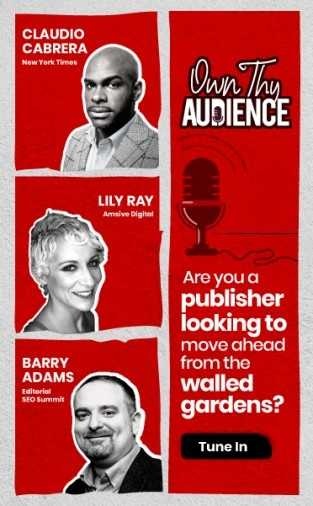In the world of adtech, products are copied all the time. When Facebook ripped off Stories from Snapchat - a small fraction of Twitter went crazy, fast forward a quarter - nobody really cared who got there first.
Facebook did this with Google+ many years ago - by ripping off their Photos product. Popular features get ripped off all the time. But it’s important to understand what Instagram had that made Stories such a big deal. The answer is - Reach. Between Instagram and Whatsapp, Meta taps into 1B+ users across the globe. Reach of a billion users translates into data of a billion users + usage history of a billion users. Add to this inherent virality that these features are baked in - and you have a winner at hand. And FAANG (Facebook, Amazon, Apple, Netflix, and Google) are infamous for this. Amazon has been accused of doing this on amazon.com and even AWS. But this is a story of how Google - a company infamous for its morgue of social products, built the most amazing content recommendation feed.
Being the first to launch is rarely enough. Taboola and Outbrain, TelAviv-based companies started back in 2006 but it was only in 2012 that their content-based recommendation products hit the market. Taboola and Outbrain were amongst the first products pointing out holes in the content discovery world.
| Queries | Meta / NewsFeed | Google Discover |
| Where was Publisher’s Content shown? | Newsfeed across Insta, Facebook.com and Facebook News tab, Facebook Instant Articles (getting shut) |
-1 Screen on Android, and
Chrome. Google App on iOS
|
| What else is on the feed? | Publisher content is constantly competing with user’s posts and Ads | Only curated with publisher content |
| Content Formats | Articles, Stories and Videos |
Visually heavy articles,
Short Videos, Web Stories |
| Curation | Content from publishers, and pages followed by the user, interest-based and recommendations | Content from topics followed by user, user interest and recommendations |
| Contribution to publisher’s traffic | Plummeted and flattened out over the last three years. | Growing constantly for publishers. Contributing anywhere between 5-20%. With Spikes |
| Scope for hyperlocal publishers | Limited to the publisher’s ability to attract followers and continuously push out engaging viral content | Opportunity for hyperlocal publishers who are optimizing for Google Discover |
Content Discovery as a Product vs Feature
Most of the 2010s were driven by either search, or social media - aka Facebook, and Twitter. Throw in news aggregators for live events - such as Apple News, and Google News. These were the only means of discovering new content.
The underlying problem was that - you were living in a bubble and were feeding the bubble with every click on Facebook. You got more of what you liked instead of what you might have liked - the social newsfeed algorithms only fed you what your friends and family were consuming.
Recommendation Media is Replacing Social Media
Content recommendations are different, you aren’t served more of what you’ve already liked. This is why TikTok has an inherent edge over Facebook’s interest-based feed. The Tiktok feed is the exact opposite of Meta’s products - TikTok feeds you videos that you are likely to watch based on the algorithm’s understanding. And not based on what your friends have liked.
But, wait, this story has already played out. Once at least. Taboola and Outbrain widgets have been on the internet for over a decade. The challenge was that selling to publishers is an uphill task, and their reach and access to data were only as good as Taboola and Outbrain’s ability to bring in more publishers.
Enter Google Discover - Google did a Facebook with its Discover product. It started with the -1 screen on Android devices. Google quickly gave it premium real estate in Chrome’s New tab. Yes, the browser with the highest market share. Google Discover now consistently features in the top 10 traffic sources for publishers. The secret sauce - Google’s black magic recommendation algorithm that makes users swipe right to discover new content. But then Google, unlike Taboola, doesn’t spend a penny acquiring publishers for Google Discover. Publishers just line up. Google owns Android, and most OEMs now extend Google Discover defacto to their -1 screens. Google Discover is also available in the Google app on the iPhone.
Also Read: What is Google Discover? And What Publishers Need To Know
And guess what Google also feeds you in Discover - Web stories. The most engaging form of content out there. Web Stories that surfaced around 2019, have now become the go-to format for publishing teams as they repurpose content. What’s better is how publishers are now able to monetize.
Google Discover Monetization
Discover feed has a striking similarity to Facebook newsfeed - without the comments, likes, and reactions. Personalized to you -allowing you to feed it more and more data into Google. What’s better is how Discover is being monetized actively with ads and because it’s Google’s own inventory, ad revenue goes directly to Google. Top that up with Web Story Ads - which show up in between Web Story slides, which also show up in Google Discover.
Webinar: How to Succeed at Google Discover
That’s how Google has taken publisher content, put it in a newsfeed format, stripped it of all social reactions, and added the recommendation engine, outdoing all content recommendation platforms. Google has also introduced new advertising formats, without having to share the advertising revenue with anyone. With zero efforts to onboard publishers, no contracts, and no sales team. Just a product-led motion.
Feature Image Credit: Google Search Central






